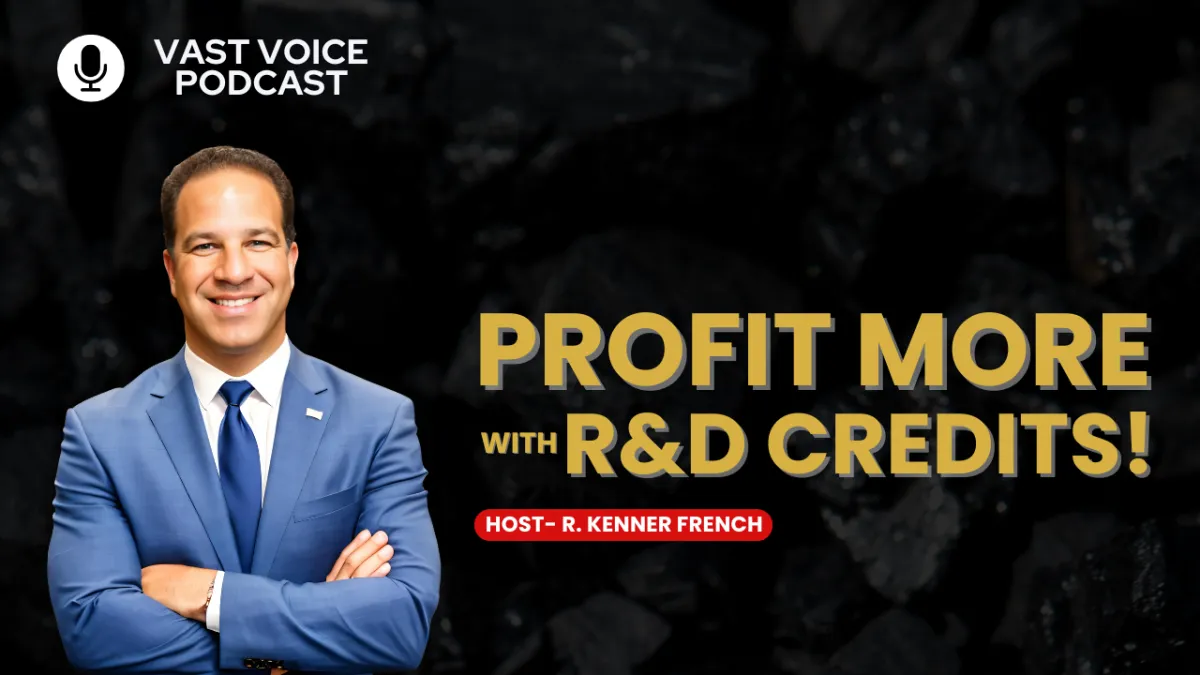
Profit More with R&D Credits!
In this episode for Excel University, R. Kenner French explains how entrepreneurs and small business owners can tap into Research & Development (R&D) tax credits — a powerful yet often overlooked government incentive designed to reward innovation. He emphasizes that even experienced tax professionals frequently miss this opportunity. Companies using artificial intelligence (AI) tools like ChatGPT, or engaging in trial-and-error innovation and process improvements, may already be eligible for these credits without realizing it.
Kenner illustrates this point through his own experience. Since 2010, his firm has benefited from R&D tax credits, particularly through the development of a proprietary AI system called Einstein. These credits have helped fund a wide range of innovations — including tax strategy software, automated phone systems, customer service bots, and a mobile app. He encourages others to explore similar opportunities, noting that even activities like learning Excel automation or implementing large language models (LLMs) may meet the IRS’s definition of qualified R&D.
To qualify for R&D tax credits, businesses typically need to meet four key criteria: (1) they must be creating something new or improving an existing process, (2) the project must involve science or technology, (3) it must involve experimentation or trial-and-error, and (4) there must be some level of technical uncertainty. Even failed attempts can qualify. Kenner explains how his firm allocates 20% of its gross revenue to a dedicated innovation division, turning experimentation into a structured, repeatable strategy backed by both federal and state-level incentives.
He concludes with a call to action: business owners should consult their tax professionals and evaluate whether their current activities qualify for these credits. To support this, he offers free access to his book, Collection of Entrepreneurs, and invites listeners to use tools like VastSolutionsGroupAI.com and AICreditMax.com to assess their eligibility. Ultimately, by embracing innovation and leveraging R&D incentives, entrepreneurs can save money, scale faster, and gain a competitive edge — all while contributing to broader technological progress.
Takeaways
• The government provides funding for innovative projects through R&D tax credits.
• Many businesses are unaware of the potential benefits of R&D tax credits.
• Qualifying for R&D tax credits requires demonstrating innovation and improvement.
• Artificial intelligence can significantly enhance business operations and qualify for R&D credits.
• Trial and error in innovation can still lead to R&D tax credits.
• Investing in R&D can provide substantial financial benefits for businesses.
• R&D tax credits can be claimed retroactively for up to three years.
• Utilizing AI can give businesses a competitive edge in the market.
• The R&D tax credit is a valuable tool for entrepreneurs and small businesses.
• Innovation is crucial for maintaining competitiveness in the global market.
Sound Bites
• You could be getting paid by the government.
• Are you doing something new or better?
• It helps humanity, we can put ourselves in a better footing.
Listen & Subscribe for More:
🎧 The Vast Voice Podcast → Available on Spotify & Apple Podcasts
▶️ Subscribe to VastSolutionsGroup.com on YouTube for expert insights! 🚀
If you have any questions in general you can reach our office at:
Phone: 415-212-8189
Email: [email protected]
Monday-Thursday 8:00 AM – 5:00 PM (Pacific)
Thank you for listening!
